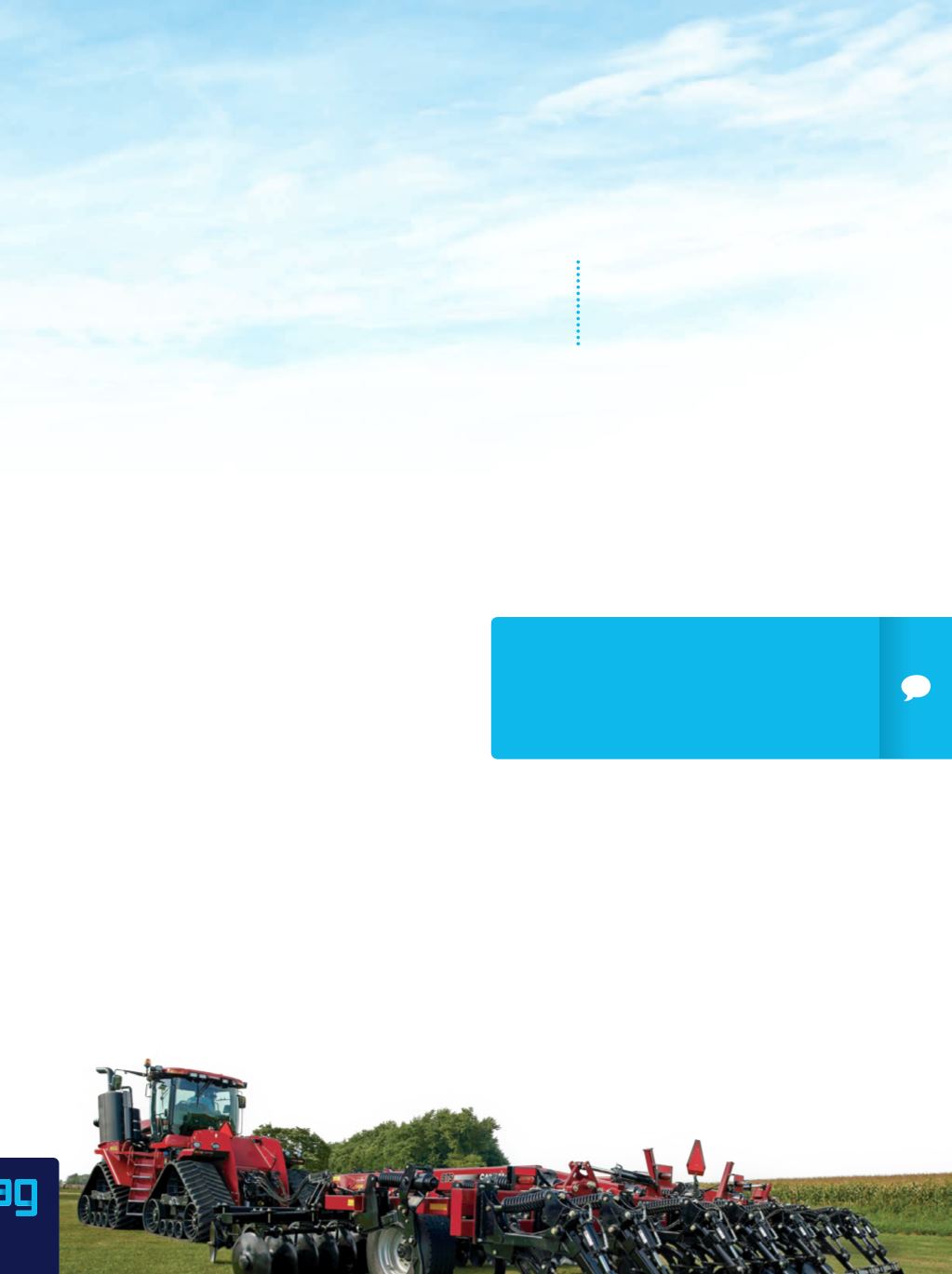

28
THE BENEFITS OF
TILLAGE PRESCRIPTIONS
It’s another way farmers can optimize their fields,
a Case IH rep said
DIEGO FLAMMINI
FARMS.COM
Case IH is studying another area of
precision agriculture.
Farmers have adopted prescriptions for other parts
of their operation, but tillage usually isn’t part of that
equation, said Chris Lursen, tillage marketing manager
with
Case IH .“Throughout history, soil management has kind of been
this peanut butter spread concept with one setting and
doing a whole field at that setting,” he told Farms.com.
“We can create prescriptions, just like with seed and
fertilizer, to optimize each area of the field.”
Case IH agronomists experimented with prescriptions
using the True-Tendem 335 VT last summer.
Taking soil characteristics and topography into
account, they created a custom tillage plan on the test
field.
They set the tillage tool to a 2.5-inch depth in some
areas, 1.5 inches in others and zero-inch depth in
additional parts of the field.
Each setting showed different results, said Alison
Bryan, a research agronomist with Case IH.
“At 2.5 inches, we looked at residue coverage before
and after running, and saw a reduction in residue
there,” she told Farms.com. “At 1.5 inches, where we
wanted some incorporation but didn’t want to be as
aggressive, we did see a reduction in coverage, but
it was more maintained. And at zero inches, we were
able to knock down residue. By knocking it down, it still
had the root there and maintained it in that area and
increased the percent (of) residue coverage.”
Another experiment used the Case IH 875 disk ripper
to alleviate soil compaction.
Bryan and her team set the tool at multiple depths.
“We ranged from five to 14 inches,” she said. “We saw
a 10 percent higher productivity across five different
fields with our prescription.”
Creating a tillage prescription can be as simple or
complex as an individual farmer wishes.
Farmers already have their field information available.
It’s a matter of setting the equipment up to perform
accordingly, Lursen said.
“Generally, farmers are going to do maybe two or three
settings, but they can do much more if they want,” he
said. “It’s about allowing farmers to use the knowledge
they have to implement it.”
|
pag
“WE SAW A 10 PERCENT HIGHER
PRODUCTIVITY ACROSS FIVE
DIFFERENT FIELDS WITH OUR
PRESCRIPTION.”
PHOTO: caseih.com
















